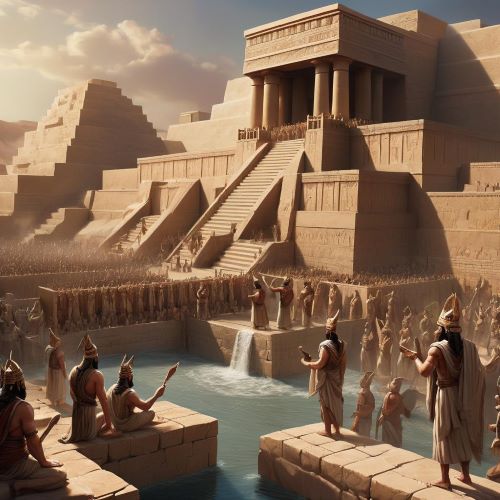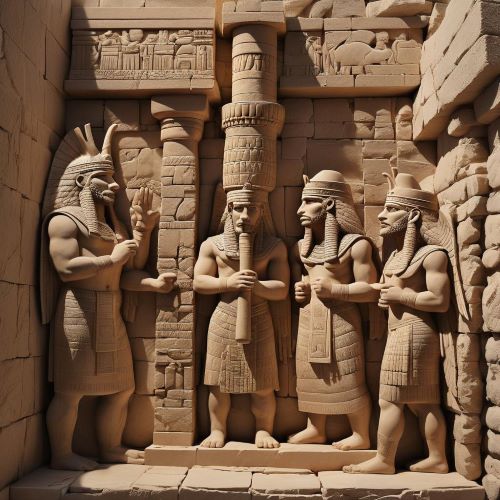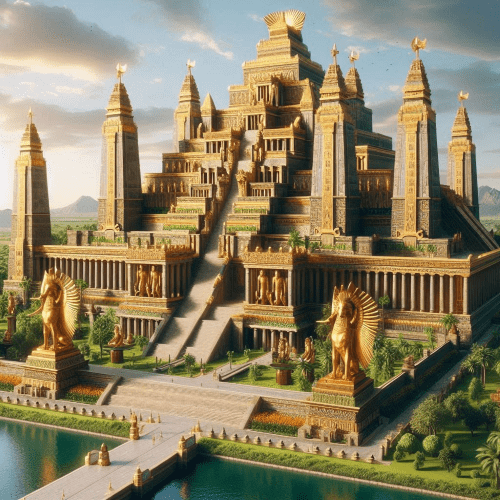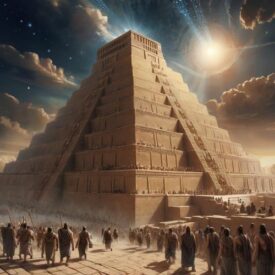Mesopotamian Mythology
Mesopotamian mythology is one of the earliest and most complex systems of belief in human history, born in the fertile lands between the Tigris and Euphrates rivers. It served as the foundation for the world’s first known civilizations—Sumerian, Akkadian, Babylonian, and Assyrian—and influenced later cultures across the Middle East and beyond. The myths of this ancient region reveal how early people understood creation, divine order, and the human condition. Through their deities, epic tales, and sacred rituals, they sought to explain natural phenomena, legitimize kingship, and define moral and spiritual values that shaped societies for millennia. The stories of gods like Enlil, Ishtar, Marduk, and Ashur not only captured the imagination of ancient Mesopotamians but also laid the groundwork for later mythological and religious traditions, including elements that would reappear in Greek, Persian, and biblical narratives.
Sumerian mythology, the earliest form of Mesopotamian mythology, introduced the pantheon that would dominate the region for centuries. The Sumerians viewed their gods as powerful yet human-like beings who governed every aspect of life—from fertility and water to war and wisdom. Anu, the sky god, ruled the heavens; Enlil controlled the air and storms; and Enki (or Ea) governed wisdom and the subterranean waters. The epic of Gilgamesh, one of humanity’s oldest literary works, originates from Sumerian legends and explores themes of mortality, divine justice, and the search for immortality. This narrative, along with countless hymns, prayers, and temple inscriptions, reflects a deep understanding of human struggle and the fragile relationship between mortals and the divine—a theme that remained central in all later forms of Mesopotamian mythology.
As the Akkadian and Babylonian empires rose, Sumerian deities and myths were adapted into new linguistic and cultural contexts. The Akkadians preserved many Sumerian tales but reimagined them to align with their own pantheon, elevating gods like Ishtar (Inanna), the goddess of love and war, and Shamash, the sun god and divine judge. Babylonian mythology reached its height with the “Enuma Elish,” a grand creation epic that placed Marduk, the city’s patron deity, at the center of the cosmos. According to the myth, Marduk defeated the chaos dragon Tiamat and formed the world from her remains, establishing divine order and securing his supremacy among the gods. This myth not only reflected Babylon’s political dominance but also symbolized the eternal struggle between chaos and order—a theme deeply rooted in Mesopotamian cosmology and echoed throughout later civilizations.
In Assyrian mythology, divine narratives took on a more militant and imperial tone, reflecting the empire’s warlike nature. Ashur, the chief Assyrian deity, was depicted as a warrior god who symbolized strength, conquest, and divine kingship. Temples, ziggurats, and royal inscriptions celebrated the gods as protectors of empire and enforcers of divine justice. Despite differences in language, art, and political power, all branches of Mesopotamian mythology shared a profound reverence for the divine balance that governed both heaven and earth. These myths preserved the ancient world’s understanding of destiny, morality, and humanity’s role in the cosmos. Today, Mesopotamian mythology continues to inspire scholars, writers, and artists worldwide, offering timeless insight into the origins of civilization and the eternal dialogue between gods and humankind.





